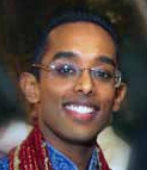Maintaining Hindu Culture in Our Youth
 |
There is a problem that the Hindu Community in North America is facing: engaging the generations of Hindus that have been born and raised in Canada and the United States. In North America, he predominant culture is not “Indian” nor is it Hindu, and the attentions of today’s youths are being pulled in many different directions. In many ways, Hinduism is in direct competition with the North American lifestyle. My parents were born and raised in Trinidad and Tobago, a country where approximately 25% of the population is Hindu. While my parents did not speak Hindi growing up, the Hindu religion and culture endured as it did in many other countries in the West Indies such as Guyana and Suriname. |
|
My parents left Trinidad for Canada in the 1970s as did many others during that time. Fitting in was very important and I did not want to be seen as being different. That being said, I never felt the need to reject my Hindu life during my childhood. I enjoyed everything about the mandir and I was quite content in maintaining a double life. During these years, life went on as usual with school pressures, finding a career and establishing myself in society. The question that I continue to ask myself is: What kept me involved in mandir life? Even while being in school and graduating University, the mandir was always central to my life. The answer to this question is parental involvement. Having parents who dedicated their time and effort to maintaining a mandir meant that as a child growing up, I was involved by default. My siblings and I were deeply involved in music and that lead to a deeper appreciation for what attending mandir can offer. Music was our hook, our attraction. Having friends in the mandir was also a reason to attend however the teenage years were most difficult as many of the friends I grew up with stopped coming to the mandir as this is the age of independence. You start driving and now all of a sudden you can go anywhere you want. It is a problem that plagued us for years however with the launch of our youth group in 2004 we attempted to address some of these problems. In speaking with youths from other Mandirs, this seems to be a common theme among Hindu temples. Why is it that the “youth group” model is failing in Mandirs? One of the issues is adult involvement in Mandir youth groups. While I believe the intentions of the adults are genuine in that they want to see today’s youth inspired to learn more about Hinduism, in practice this has translated into the adult members of temples dictating what the youth should or should not do. Some youth that I have spoken with feel that their youth group is being used to raise funds for the Mandir or to organize help for the variety of activities that occur in temples. While volunteer service is a cornerstone of Hinduism, this should not be a youth group’s sole focus. The creation of our youth group went against the norms of many established practices that had prevailed. We were allowed to regulate ourselves without any interference from management or the adults of the mandir. We opened our own bank account and raised money for ourselves to use in the running of our own events without asking anything from the mandir management. Our aim was to bring youths together through social activities and community outreach. We hosted events, arranged anniversary dinner and dances, went on field trips, arranged seminars and workshops. Aside from events, we also gave back to the community through various outreach activities such as food drives, sponsoring children in India, as well as establishing a yearly scholarship for any youths who attend the mandir and were now entering into post secondary education. Hinduism in North America will thrive and flourish if we take action today to start creating more “hooks” to attract youth to the Mandir. Hinduism has so much to offer in terms of its teachings, science and beliefs and it is important that we create an environment that encourages youth participation in a manner that is attractive and fun. This involves work and action. Simply writing “feel good” articles does not accomplish anything. We have a duty to act and make the future we envision. |
|
































